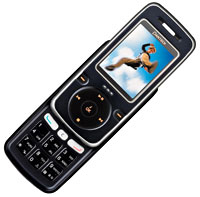 Straight out of the school of Advanced Homage to iPods comes this new music phone from South Korean phone maker Pantech.
Straight out of the school of Advanced Homage to iPods comes this new music phone from South Korean phone maker Pantech.
Featuring a (ahem) “revolutionary touch-wheel sensor,” the phone is aimed at “digital generation” music fans, with 512 Mb internal memory capacity supported by an external card slot for maximum onboard tunes.
Arriving on the shelves of Hong Kong and Taiwan stores today, the phone features a slide-out keypad design, a 1.9in, 262,144-colour display and the not-at-all-like-the-iPod clickwheel, which “enables easy navigation by allowing users to sweep the wheel key with their fingers”, according to Pantech.
As well as operating the music controls, the circular control can be used to control menu bars, zoom in on images taken with the phone’s built-in 1.3-megapixel camera and to skip through MPEG 4 videos recorded on the Pantech.
Uniquely, there’s some basic video editing software on board for users to create Fellini-like mini epics on their phones.
S. Jay Yim, Vice President, Overseas Marketing, Pantech, was suitably enthusiastic: “The PG-3600V not only offers a unique design with its finely honed, attractive finish, but it also highlights our efforts to offer the latest, most user-friendly applications to young tech-savvy users. We feel the PG-3600V actively supports the desire prevalent amongst many people to stand apart from the crowd.”
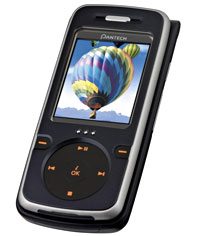 Rounding off the phone’s feature set is stereo audio-enabled Bluetooth and a speakerphone in the 10.2 x 4.7 x 1.8cm package which weighs in at 94.1g.
Rounding off the phone’s feature set is stereo audio-enabled Bluetooth and a speakerphone in the 10.2 x 4.7 x 1.8cm package which weighs in at 94.1g.
Needless to say, there’s no UK/European release date set yet.
Specs:
Touch wheel sensor
1.3 mega pixel CMOS camera
Display: 1.9″ QCIF, 260 K color TFT LCD
MPEG-4 recording/editing function
Music player (MP3/ AAC/AAC+/WMA)
Speakerphone
Stereo Bluetooth
SMS/MMS/e-mail
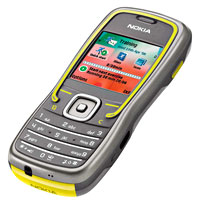 For hyperactive sporty types, lardy lumps looking to lose some weight and headband-totin’ workouters, Nokia has trotted out its new super-sporty phone, the 5500 Sport.
For hyperactive sporty types, lardy lumps looking to lose some weight and headband-totin’ workouters, Nokia has trotted out its new super-sporty phone, the 5500 Sport.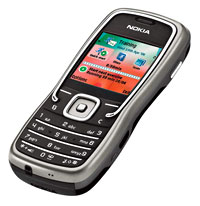 Jog the line
Jog the line Music on the go
Music on the go Conveniently, there’s a dedicated key that makes it easy to switch between phone, music and training modes with text to speech software feeding you text messages and workout status reports on the move.
Conveniently, there’s a dedicated key that makes it easy to switch between phone, music and training modes with text to speech software feeding you text messages and workout status reports on the move.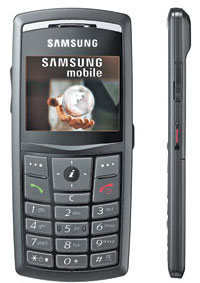 Samsung have unveiled their new SGH-X820, proudly labelling it the ‘world’s thinnest phone’.
Samsung have unveiled their new SGH-X820, proudly labelling it the ‘world’s thinnest phone’. Apparently using Victorian corset techniques, Samsung’s designers have also managed to wedge in a 1.9″, 176×220 pixel display (262k colours), Bluetooth connectivity, USB support, a TV-out jack and a 2 megapixel camera that records video into its 113mm x 50mm (4.4″ x 2″) dimensions.
Apparently using Victorian corset techniques, Samsung’s designers have also managed to wedge in a 1.9″, 176×220 pixel display (262k colours), Bluetooth connectivity, USB support, a TV-out jack and a 2 megapixel camera that records video into its 113mm x 50mm (4.4″ x 2″) dimensions.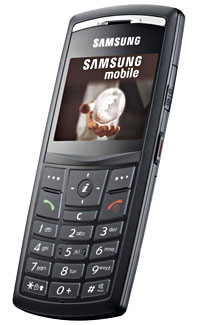 The super-slim device supports GPRS/EDGE data on 900MHz, 1800MHz, and 1900MHz GSM bands and, unlike Motorola’s futuristic designs, comes in a traditional format with individual keys.
The super-slim device supports GPRS/EDGE data on 900MHz, 1800MHz, and 1900MHz GSM bands and, unlike Motorola’s futuristic designs, comes in a traditional format with individual keys. Another in the “hacks” range of O’Reilly books, where hacking is doing interesting things with something, rather than the unfortunate media convention of breaking into computers (which has some relevence as you’re getting into the guts of the BlackBerry in ways RIM, the manufacturer, may not have expected and/or indeed intended).
Another in the “hacks” range of O’Reilly books, where hacking is doing interesting things with something, rather than the unfortunate media convention of breaking into computers (which has some relevence as you’re getting into the guts of the BlackBerry in ways RIM, the manufacturer, may not have expected and/or indeed intended).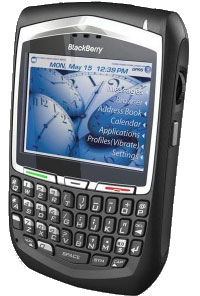 The book also gives a good insight into programming the Blackberry and describes the tools that RIM provide and how to go about using them (and what other things you need to do). RIM originally made the BlackBerry for corporates and the last thing they wanted was nasty virii and programs infecting them, so when a program tries to access some of the BlackBerry’s inner workings the BlackBerry actually checks that the program is valid and should be doing that. RIM force programmers to “sign” programs and there’s info on how to go through that process.
The book also gives a good insight into programming the Blackberry and describes the tools that RIM provide and how to go about using them (and what other things you need to do). RIM originally made the BlackBerry for corporates and the last thing they wanted was nasty virii and programs infecting them, so when a program tries to access some of the BlackBerry’s inner workings the BlackBerry actually checks that the program is valid and should be doing that. RIM force programmers to “sign” programs and there’s info on how to go through that process.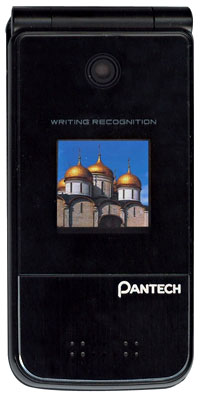 Pantech Group, South Korea’s second biggest mobile phone company, has announced that it’ll be wowing the crowds with the new PG-2800 GSM ‘finger writing recognition phone’ at the Moscow SVIAZ Expo Comm trade show this week.
Pantech Group, South Korea’s second biggest mobile phone company, has announced that it’ll be wowing the crowds with the new PG-2800 GSM ‘finger writing recognition phone’ at the Moscow SVIAZ Expo Comm trade show this week.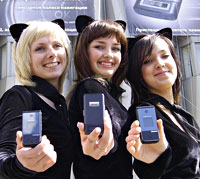 The company is also aiming high worldwide, with expectations to shift 27 million unit sales globally in 2006.
The company is also aiming high worldwide, with expectations to shift 27 million unit sales globally in 2006. She’s got a mission to eliminate mobile phone roaming rip-off charges. She’s Commissioner Viviane Redding of the EC, and today, Vodafone took PR action to keep itself out of her sights, by promising to “cut roaming by 40%” by this time next year.
She’s got a mission to eliminate mobile phone roaming rip-off charges. She’s Commissioner Viviane Redding of the EC, and today, Vodafone took PR action to keep itself out of her sights, by promising to “cut roaming by 40%” by this time next year.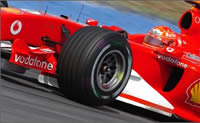 But like many of the giants, Vodafone is suffering from the cost of providing phones. All the European operators, traditionally, subsidise handsets; they give them away, or sell them for a fraction of their cost, in the expectation of making substantially more out of phone call charges – and it works.
But like many of the giants, Vodafone is suffering from the cost of providing phones. All the European operators, traditionally, subsidise handsets; they give them away, or sell them for a fraction of their cost, in the expectation of making substantially more out of phone call charges – and it works.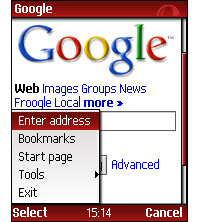 Nordic browser kings Opera Software have released Opera Mini 2.0, a spanking new version of their tiny Web browser that runs on almost all mobile phones.
Nordic browser kings Opera Software have released Opera Mini 2.0, a spanking new version of their tiny Web browser that runs on almost all mobile phones.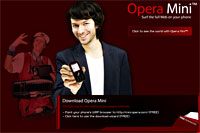 Also new for version two is a speed dial widget, which lets surfers call up bookmarks by assigning shortcut key combinations.
Also new for version two is a speed dial widget, which lets surfers call up bookmarks by assigning shortcut key combinations. With Opera Mini supporting mobile commerce via SMS, users can directly buy ringtones, games and other content for delivery as an SMS.
With Opera Mini supporting mobile commerce via SMS, users can directly buy ringtones, games and other content for delivery as an SMS.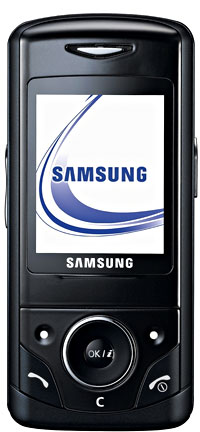 Pulling out its big book of alliteration, Samsung have declared their new D520 phone to be full of “Stylish Simplicity and Stunning Sophistication.”
Pulling out its big book of alliteration, Samsung have declared their new D520 phone to be full of “Stylish Simplicity and Stunning Sophistication.”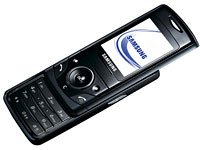 The SGH-D520 should be appearing on the shelves around Europe any time now.
The SGH-D520 should be appearing on the shelves around Europe any time now.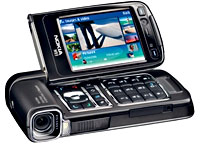 The dome-headed boffins at Nokia have triumphantly put their multiple pens back in their white coat pockets as the new Nokia N73 and N93 phones roll out on the product slipway.
The dome-headed boffins at Nokia have triumphantly put their multiple pens back in their white coat pockets as the new Nokia N73 and N93 phones roll out on the product slipway. Being Brits, we refuse to describe mobiles as having a ‘candybar’ form factor, so how about we call the N73, ‘Amazin’ Raisin Bar’ shaped?
Being Brits, we refuse to describe mobiles as having a ‘candybar’ form factor, so how about we call the N73, ‘Amazin’ Raisin Bar’ shaped?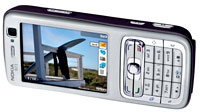 Rounding off the man-sized feature set is Bluetooth 2.0, a music player supporting MP3, AAC, AAC+ and WMA, video player with streaming support, FM radio with visual radio and a set of built-in pixie-sized 3D stereo speakers.
Rounding off the man-sized feature set is Bluetooth 2.0, a music player supporting MP3, AAC, AAC+ and WMA, video player with streaming support, FM radio with visual radio and a set of built-in pixie-sized 3D stereo speakers.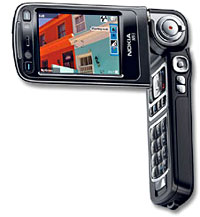 Modestly billed by Nokia as the “ultimate mobile device for spontaneous video recording,” the N93 features a 3.2 megapixel camera with Carl Zeiss optics, “DVD-like” video capture at 30 frames per second, and 3x optical zoom with video stabilisation.
Modestly billed by Nokia as the “ultimate mobile device for spontaneous video recording,” the N93 features a 3.2 megapixel camera with Carl Zeiss optics, “DVD-like” video capture at 30 frames per second, and 3x optical zoom with video stabilisation.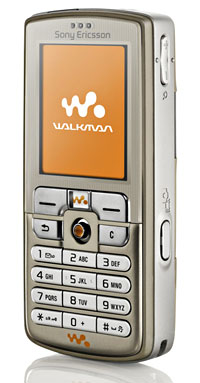 Rolling off Sony Ericsson’s well-furrowed product slipway this morning is the W700i Walkman Phone, the company’s eighth addition to their Walkman range.
Rolling off Sony Ericsson’s well-furrowed product slipway this morning is the W700i Walkman Phone, the company’s eighth addition to their Walkman range.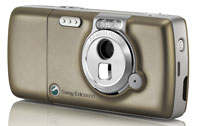 Like the W800, the W700 comes with a full complement of onboard gizmos, including a two megapixel camera, 1.8 inch 262k 176×220 colour TFT display, dedicated music buttons and Bluetooth and Tri-band connectivity.
Like the W800, the W700 comes with a full complement of onboard gizmos, including a two megapixel camera, 1.8 inch 262k 176×220 colour TFT display, dedicated music buttons and Bluetooth and Tri-band connectivity.